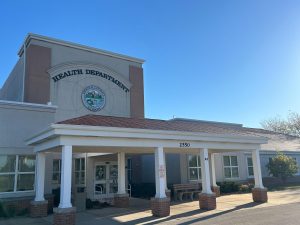Alcohol-related deaths and injuries are preventable
October 4, 1988
Well Now
Last year three NIU students died in alcohol related incidents.
a male student who had been drinking was walking home alone. He fell, cut his thigh on some glass, and bled to death before he was found the next day.
a female student was fatally injured after the car within which she was a passenger was struck by a drunk driver.
a male student who had been drinking was left alone to sleep it off and choked to death when he vomited.
All three of these deaths were preventable. In each case, high dose consumption (drunkenness) was the primary factor in the cause of death. A priority objective for Health Enhancement Services during the 88_89 school year is to prevent alcohol related deaths altogether and reduce the number of alcohol related injuries occurring to students within the NIU community.
WHAT IS HIGH DOSE CONSUMPTION?
Many researchers use the benchmark: high dose consumption is anytime one drinks five or more drinks (a “drink” = 12 oz. beer or 5 oz. wine or 1.5 oz. liquor) at a drinking occasion (party, happy hour, meal, etc.). A more accurate measure of high dose consumption is a drinker’s blood alcohol level (BAL). Anytime BAL exceeds .05 percent we are significantly at risk for substance related harm. Most auto accidents, drownings, falls, assaults, accidental pregnancies, etc. occur at BAL above .05 percent. Below this blood level there is little significant difference in the risks faced by the drinker or non-drinker. The following is a chart which may help you determine your safe drink limit (below .05 percent BAL).
WHO IS MOST LIKELY TO DRINK TO HIGH DOSE LEVELS?
Inexperienced, immature, or alcoholic drinkers are most likely to drink at high dose levels. Studies of college students indicate that freshman drink less frequently than upperclassmen but drink to higher dose levels when they do drink. A study conducted at NIU last year showed this breakdown by age of those who drank 5 or more drinks per occasion:
35 percent 19 year-olds
26percent 20 year-olds
7 percent 21 year-olds
4 percent 22 year-old
Many of these 19- to 20-year-old students are inexperienced, immature drinkers. Liberal estimates of the number of college-age alcoholics place the number at 5 percent.
HOW CAN YOU PREVENT HIGH DOSE CONSUMPTION?
The obvious response is “Do not drink”. Some students have made that choice. Healthy drinkers respect that choice…IT‘S OK NOT TO DRINK. It is also OK to drink. Many adults who drink make a conscious effort to limit their drinking. They stay within the safe drink limit and enjoy alcohol’s effects on their inhibitions and social interaction without risking harm to themselves or others. Beginning drinkers should seek-out experienced, responsible adult drinkers to get tips for how to drink safely.
HOW CAN I KEEP A DRUNK FRIEND FROM DOING HARM?
The three most important rules for dealing with highly intoxicated persons are:
DO NOT LEAVE THEM ALONE.
DO NOT LET THEM DRIVE.
DO NOT GIVE THEM ALCOHOL, MEDICINE OR OTHER DRUGS.
If these rules would have been followed by those dealing with the people involved in the alcohol related deaths during the last school year, perhaps those students would be at NIU today.
Throughout this school year, Health Enhancement Services (HES) will be conducting programs, providing information, advocating policy changes and training people to prevent alcohol related harm. “THINK WHEN YOU DRINK” is the name of this effort. HES will coordinate services with Housing and Programming/Activities to involve young students and “greeks” in this all-campus project. Life of the Party and When to Say When are educational programs available to academic classes, student groups, residence halls, and greek houses. For more information contact HES at 753_1834.






